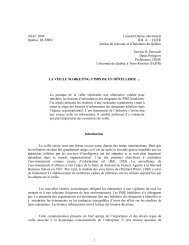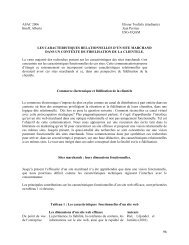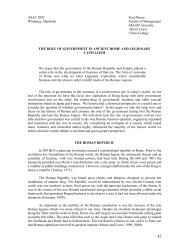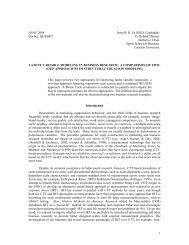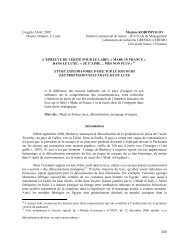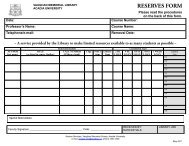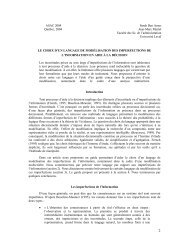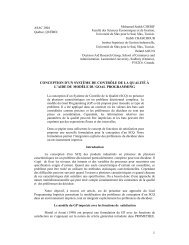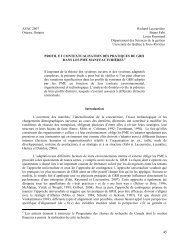ASAC 2004 – Quebec City Lynne Gillis – St. Francis Xavier ...
ASAC 2004 – Quebec City Lynne Gillis – St. Francis Xavier ...
ASAC 2004 – Quebec City Lynne Gillis – St. Francis Xavier ...
You also want an ePaper? Increase the reach of your titles
YUMPU automatically turns print PDFs into web optimized ePapers that Google loves.
‘educating’ physicians about their company’s drugs. Accordingly, Canadian pharmaceutical<br />
companies devote a significantly large portion of their marketing budget to ‘wooing’ doctors<br />
through various means with companies spending an estimated one billion dollars or $20,000 CDN<br />
used per Canadian physician (Foss, 2001).<br />
Theoretical Framework<br />
METODOLOGY<br />
This study used a qualitative methodology based on grounded theory (Glasser & <strong>St</strong>rauss, 1967).<br />
All interviews followed the “long interview” format outlined by McCracken (1988).<br />
Biographical questions were asked first, followed by a series of ‘grand tour’ questions and<br />
‘planned prompts’ (McCracken, 1988). Grand tour questions allow for the interviewee to tell their<br />
own story in their own terms. In order to gather further information, planned prompts are used to<br />
gain further reflection from respondents. The final step involved analysis of the data collected.<br />
The purpose here is to determine the “categories, relationships, and assumptions that informs the<br />
respondent’s view of the world in general and the topic in particular” (McCracken, 1988; pg. 42).<br />
Once these themes are developed, interrelationships as well as contradictions are looked for.<br />
Respondents<br />
For this study, a ‘purposeful sample’ (Lincoln & Guba, 1985) of general practitioner physicians<br />
with different profiles (e.g. size of community; length of service) were sought out. McCracken<br />
(1988) suggests 8 respondents are needed for an adequate respondent pool; for this research 11<br />
physicians were interviewed. As recommended by McCracken (1988), no respondent had prior<br />
contact/relationship to the researchers. To find the physicians for the research the annual listing<br />
2001/2002 of the Collage of Physicians and Surgeons of Nova Scotia was used. Sixty-five<br />
requests for interviews were faxed out to general practitioners across Nova Scotia with 11<br />
agreeing to be interviewed (17% responds rate). Ten of the physicians were male. 1 Respondent’s<br />
ages ranged from mid-thirties to late fifties, and length of time in practice spanned from 10 to 33<br />
years. Interviews lasted between 15 and 40 minutes, with the average interview lasting 25<br />
minutes (the 15 minute interview was cut short due to a medical emergency). Physicians<br />
willingly discussed their relationship with PSRs and spoke freely and candidly throughout the<br />
interview drawing on their own encounters with sales representatives. In all cases the interviews<br />
were audio recorded and transcribed resulting in 122 pages of text. Ten of the physicians<br />
interviewed had regular detailing encounters with PSRs while one physician had only limited<br />
interactions with PSRs. On average, the physicians saw three sales representatives per week.<br />
The range of time physicians spent with a PSR was from 5 minutes to an hour. The majority of<br />
physicians stated they spent approximately 10 minutes on a PSR call 2 typically meeting with<br />
PSRs in their office.<br />
RESULTS<br />
In general, physicians had strong opinions about their relationships with pharmaceutical sales<br />
representatives, and the role PSRs play in providing information on pharmaceuticals to them.<br />
1 The sample is slightly skewed; at present 70% of current physicians in Nova Scotia are male (CMA,<br />
2003).<br />
2 The apparent willingness of these physicians to spend several minutes in a sales call seems to contrast<br />
with the average amount of time an American physician is said to be with a PSR - less than 2 minutes<br />
(Health <strong>St</strong>rategies, 1999).<br />
2




